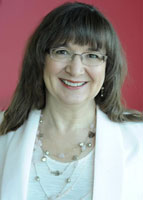As “World No Tobacco Day” approaches on Friday, May 31, results from a pilot study show there may be another path to help people who want to quit smoking.
A study led by Kelly Buettner-Schmidt, associate professor in the School of Nursing at North Dakota State University, looked at the role chiropractic clinics could play in providing education about tobacco cessation to their patients.
In the pilot study, six chiropractic clinics in North Dakota worked to integrate methods to help patients stop smoking. The study, “Systems Change to Improve Tobacco Use Identification or Referral in a Chiropractic Setting,” was published in Chiropractic and Manual Therapies.
Chiropractic clinical systems often remain unsupported and underappreciated in their role to facilitate tobacco use cessation, according to study authors.
Based on U.S. Public Health Service guidelines of the Ask, Advise, Refer approach, study authors sought to determine whether implementing sustainable health systems changes in the chiropractic community would be an untapped resource in helping people quit smoking.
All of the clinics participating in the study made progress in implementing the individual components of Ask, Advise and Refer. According to study results, of the patients responding to follow up phone calls, the patient quit rate was 13.3% for the 30-day follow-up of 15 patients and 16.7% for the three-month follow-up of six patients.
More than one in seven adults use tobacco products, and tobacco-related illness remains the leading cause of preventable death in the United States. The World Health Organization asks smokers worldwide to put down their tobacco for World No Tobacco Day on May 31 to highlight the impact tobacco has on lung health.
“Patients sometimes use complementary therapies in addition to conventional medicine. Chiropractic care comprises the largest provision of complementary health care in the United States. As health care professionals, we chose to study whether providing methods to integrate Ask, Advise, Refer into chiropractic interactions with patients would help them pursue quitting tobacco,” said Kelly Buettner-Schmidt, PhD, RN, FAAN.
Patients in the study were those whose chiropractic visit was classified as a new episode of care. Chiropractors in the study attended 12 hours of education in the evenings and on weekends, using face-to-face and web-based learning. Sessions included information on motivational interviewing, free resources for tobacco cessation posters, patient handouts, and quitline referrals, along with information on how to order these items in the future.
Participating chiropractors also evaluated their health system practices and patient flow to standardize their new system and create a plan to implement it. Outreach specialists provided training to chiropractic clinic staff at participating clinics.
Kris Anderson, DC, a chiropractor of Performance Chiropractic in Grand Forks, North Dakota, and Valley Community Health Center in Larimore, North Dakota, participated in the pilot.
“We saw the pilot as an opportunity to improve the way we address tobacco cessation with our patients and to contribute to a project where others could also improve by learning from our efforts,” said Anderson. “We already asked our patients about their tobacco use, but we found our process lacked questions about second-hand smoke, which also applied to our younger patients in ways we had not previously considered. The recommendations we previously made were less consistent than the process introduced by the Advise portion of the pilot.”
Chiropractor Joel Weiss, DC, of Weiss Chiropractic in Fargo, North Dakota, also participated in the study.
“It does take a little extra time and preparation, but the results are significant for some of the patients and interesting to others. Additionally, it is one more way that a chiropractor can contribute to the better health of the community,” said Weiss. “I have seen research during my 35 years of practice that has shown that smoking delays tissue healing so it has a more direct effect on patient recovery from physical injury than they realize,” he said.
Co-authors of the study included Brody Maack, associate professor in the NDSU School of Pharmacy; Mary Larson, associate professor in the NDSU Department of Public Health; Megan Orr, assistant professor of statistics at NDSU; Donald R. Miller, professor in the NDSU School of Pharmacy; and Katelyn Mills, project coordinator in the NDSU School of Nursing.
This study was funded by the North Dakota Center for Tobacco Prevention and Control Policy, Bismarck, North Dakota, grant numbers G15–79, G15–83, and G15–113.
As a student-focused, land-grant, research university, we serve our citizens.



